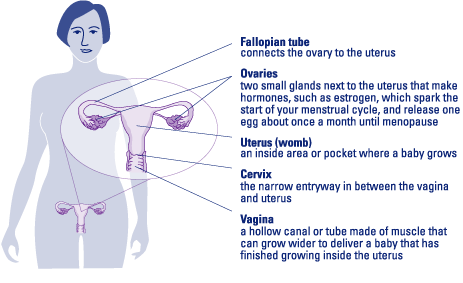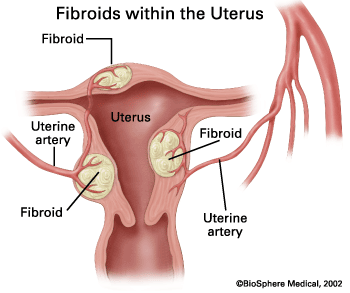Operating Hours:
Mon - Thu: 8:00AM – 4:30PM / Fri: 7:30AM - 4:00PM
Operating Hours:
Mon - Thu: 8:00AM – 4:30PM / Fri: 7:30AM - 4:00PM
Northside/Northpoint OB-GYN performs robotic surgeries using the da Vinci system for the removal of fibroids in the uterus. The Da Vinci robotic myomectomy removes the fibroids leaving the uterus in place while the Da Vinci robotic hysterectomy removes the uterus. These robotic surgeries offer many potential benefits over laparoscopic hysterectomy and traditional surgeries, including:
As with any surgery, these benefits cannot be guaranteed, as surgery is unique to each patient and procedure.


A uterine fibroid is a common type of benign (non-cancerous) tumor that can grow within the uterine wall, inside and also outside the uterus. Uterine fibroids are most common in women ages 39 to 40, but can occur at any age. An estimated 20 to 80% of women develop fibroids by age 50. Uterine fibroids are the most common reason a hysterectomy is performed.
Uterine fibroids may grow as a single tumor or in clusters. They often increase in size and frequency with age, but may shrink after menopause. Not all women experience symptoms due to fibroids.
Uterine fibroids may grow as a single tumor or in clusters. They often increase in size and frequency with age but may shrink after menopause. Not all women experience symptoms due to fibroids.
Myomectomy is a common alternative to total hysterectomy for treating uterine fibroids. Myomectomy is the surgical removal of fibroid tumors while leaving the uterus in place. Myomectomy is often recommended and considered the standard of care for women who want to become pregnant or keep their uterus for other reasons.
©2012 Intuitive Surgical, Inc. Reproduced with permission.
If your doctor recommends hysterectomy, you may be a candidate for da Vinci robotic hysterectomy, one of the most effective, least invasive treatment options for a range of uterine conditions.
The da Vinci robotic hysterectomy also allows your surgeon better visualization of anatomy, which is especially critical when working around delicate and confined structures like the bladder.
As with any surgery, these benefits cannot be guaranteed, as surgery is both patient- and procedure-specific. While radical total hysterectomy or abdominal hysterectomy performed using the da Vinci Surgical System are considered safe and effective, these procedures may not be appropriate for every individual. Always ask your doctor about all treatment options, as well as their risks and benefits.
Physicians perform hysterectomy – the surgical removal of the uterus – to treat a wide variety of uterine conditions. Each year in the U.S. alone, doctors perform approximately 600,000 hysterectomies, making it the second-most common surgical procedure.
There are various types of hysterectomy that are performed depending on the patient’s diagnosis:
Surgeons perform the majority of hysterectomies using an “open” approach, which is through an abdominal incision. An open approach to the hysterectomy procedure requires a 6-12 inch incision. When cancer is involved, the conventional treatment has always been open surgery using a large abdominal incision, in order to see and, if necessary, remove related structures like the cervix or the ovaries.
A second approach to hysterectomy, vaginal hysterectomy, involves the removal of the uterus through the vagina, without any external incision or subsequent scarring. Surgeons most often use this minimally invasive approach if the patient’s condition is benign (non-cancerous), when the uterus is normal size and the condition is limited to the uterus.
In a hysterectomy, the uterus is removed either vaginally or through small incisions made in the abdomen. The surgeon can see the target anatomy on a standard 2D video monitor thanks to a miniaturized camera, inserted into the abdomen through the small incisions. This approach offers surgeons better visualization of affected structures than either vaginal or abdominal hysterectomy alone.
While minimally invasive vaginal and hysterectomies offer obvious potential advantages to patients over open abdominal hysterectomy – including reduced risk for complications, a shorter hospitalization, and faster recovery – there are inherent drawbacks. With vaginal hysterectomy, surgeons are challenged by a small working space and lack of view of the pelvic organs. Additional conditions can make the vaginal approach difficult, including when the patient has:
With a hysterectomy, surgeons may be limited in their dexterity and by 2D visualization, potentially reducing the surgeon’s precision and control when compared with traditional abdominal surgery.
©2012 Intuitive Surgical, Inc. Reproduced with permission.
To learn more about our robotic surgeries or to schedule an appointment, please call our main office at (404) 255-3633. You can also use our online Request an Appointment Our robotic surgery patients visit us from the area of Buckhead in Atlanta, Roswell, Forsyth, Cumming, North Atlanta, Sandy Springs, Alpharetta, and Dunwoody in Fulton County, GA.
© 2025 Copyright Northpoint OB-GYN | Privacy Policy | Sitemap | Billing and Insurance Information | Designed by TheAdFirm
